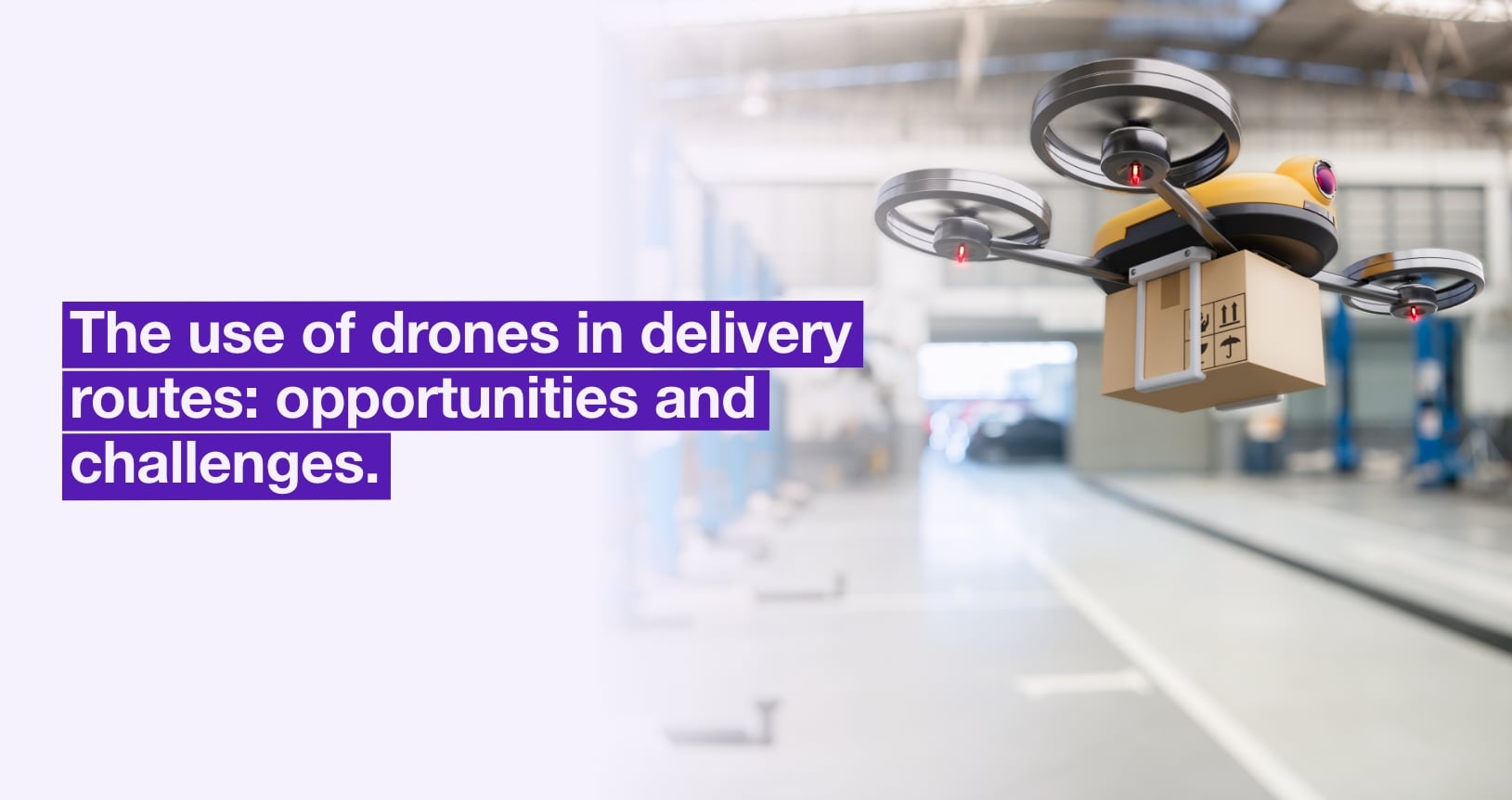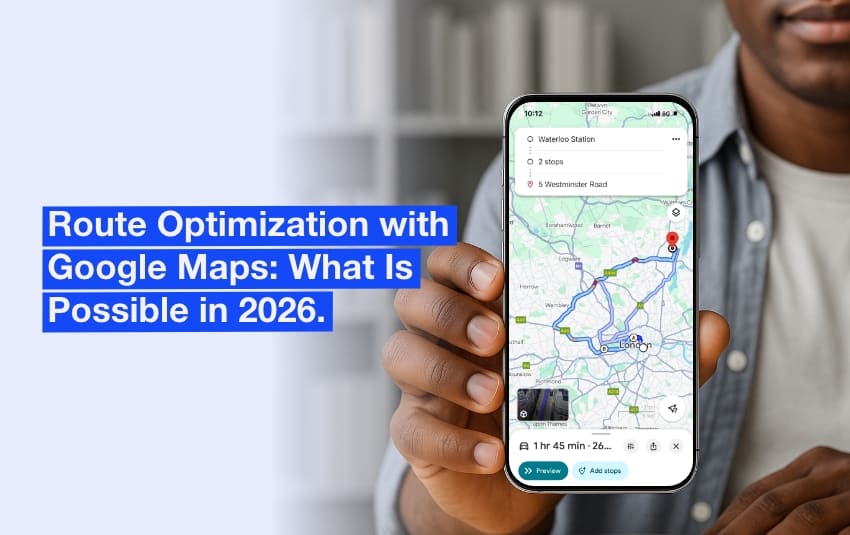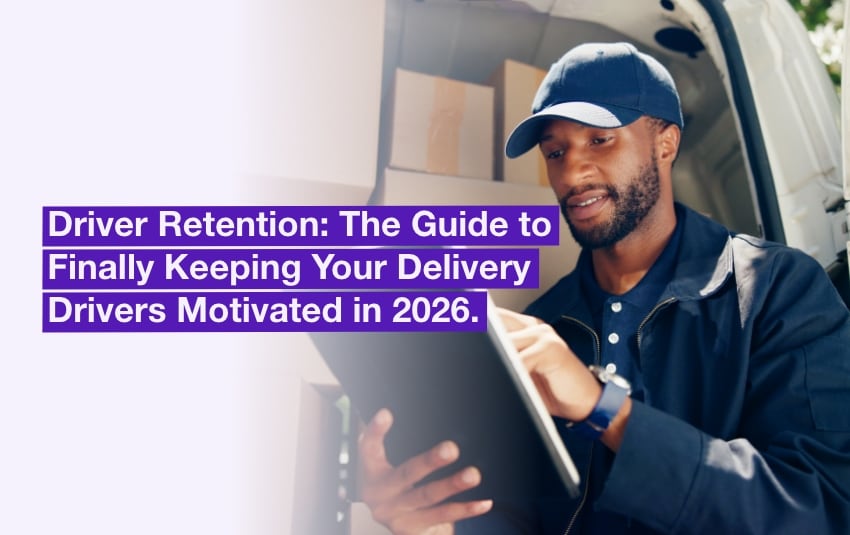The use of drones in delivery routes: opportunities and challenges
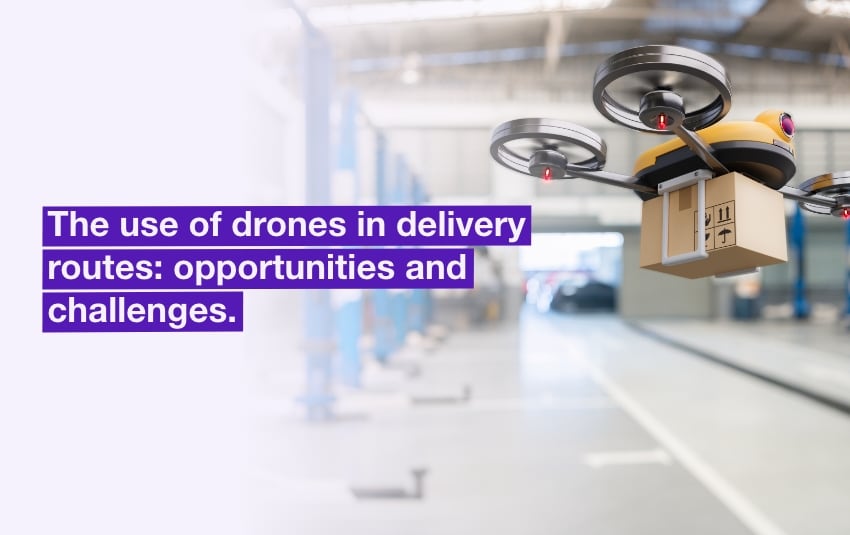
Since 2013, Amazon has made a splash by announcing its Prime Air project, promising drone deliveries in 30 minutes in urban areas. This ambitious vision captured the collective imaginary. But over a decade later, drones have not yet taken global supply chains by storm. Drones undeniably represent a lever for reinventing or at least optimising logistics. But their adoption remains slow, confronted by a series of technological, legislative and social challenges.
In this article, we explore the opportunities and challenges that drones will present for delivery routes in 2025. We will illustrate the potential of drones in logistics through concrete examples of their implementation. We will also look at the differences in legislation and market integration in Europe and the United States.
Table of contents:
- 4 major opportunities for drones to transform delivery routes
- The 3 major challenges holding back the adoption of drones in delivery routes
- Adoption of drones slower than hoped: comparison with the United States
- How can drones be successfully integrated into delivery routes?
4 major opportunities for drones to transform delivery routes
If companies like Amazon have been promising us the arrival of drones for the last ten years or so, it’s because they have so much to offer us.

The 4 major opportunities for drones to transform delivery routes.
1. An ideal solution for last-mile deliveries to remote areas
One of the main advantages of drones is their ability to deliver to places that are difficult to access, particularly in winter. This is the case in certain rural or mountainous areas, where standard routes are unprofitable, sometimes dangerous or even impossible. Drones give customers the opportunity to receive their parcels quickly, even when roads are impassable. Flying a drone in any weather over the steep, criss-crossing mountain paths saves a considerable amount of time, without any risk to the delivery drivers.
Concrete example: Royal Mail, the UK’s postal service, has been testing drone deliveries to improve accessibility in remote areas. A notable example occurred in 2021 when drones were deployed to transport mail between Kirkwall and North Ronaldsay in Scotland’s Orkney Islands, with the goal of strengthening connections for isolated communities while lowering carbon emissions.
Another concrete example: in France, La Poste launched two pilot projects in 2016 and 2019 to deliver parcels by drone to isolated areas in the Var and Isère departments. It opened a third line in January 2024 to partners such as Geopost (formerly DPD) and Chronopost, to pool parcel delivery by drone over the Vercors mountains.
Twice a week, thanks to a bulk transport hold and a multi-purpose hold, the drones transport up to 10 kg of payload over a 10 km distance between Villard-de-Lans and Corrençon-en-Vercors. The aim is to deliver to 4 other towns on the Vercors plateau in less than an hour, instead of two hours by road, saving more than 65 kilometres of mountain road.
The parcels transported by a drone, under the control of a remote operator, are dropped off at their destination in a secure compartment that protects them from the weather. The manager of the neighbouring drop-off point is automatically informed of their arrival, so all he has to do is collect them.

Drones can be used to deliver parcels to remote areas.
2. Delivery by drone – an ecological response to the climate emergency
The environmental impact of electric drones is significantly lower than that of conventional delivery vehicles, due in particular to their low energy consumption and zero CO₂ emissions. In this sense, drones represent a greener alternative and a step towards more sustainable logistics.
In the United States, a study by Carnegie Mellon University revealed that delivering small parcels by drone emits around 84% fewer greenhouse gases and uses 94% less energy than diesel trucks.
Sherpa experimental study (ADEME): In France, ADEME published in September 2020 the results of an experimental study carried out in conjunction with Atechsys, Prolexia and GeoPost. They developed different processes and technologies to build two parcel delivery lines over the mountains of Isère and compare the ecological impact of light parcel delivery by van and by electric drone. The conclusion is indisputable: for the transport of parcels weighing up to 2kg, the drone’s carbon consumption, from manufacture to operation, is less than 1% of that of an LCV.
3. Drones provide invaluable speed for critical deliveries
Drones enable extremely rapid deliveries, which is a decisive advantage in urgent situations, such as the delivery of medicines, sensitive medical equipment or even blood samples or other human tissue.
Concrete example: in Belgium, since the end of 2024, a drone has been linking the hospital in Ypres in the Flemish Region to a dialysis centre 25 kilometres away, in just 15 minutes compared with 45 minutes by road. The blood tubes are placed in a secure compartment, then unloaded automatically on arrival on a dedicated platform. In future, sensitive medical materials, such as chemotherapy preparations, could be transported in this way, sometimes saving vital time.
Another example: The CAELUS (Care & Equity – Healthcare Logistics UAS Scotland) project aims to create a national drone distribution network to transport medicines, blood, organs and medical supplies across Scotland. Led by AGS Airports with NHS Scotland and other partners, it recently successfully trialled the delivery of laboratory samples between Edinburgh Bioquarter and Borders General Hospital, reducing transport from five hours to 35 minutes.
4. Towards multimodal logistics between drones and land vehicles
Drones are not replacing conventional delivery vehicles, but complementing them. In the United States in particular, logistics operators are exploring multi-modal solutions, combining drones and land vehicles to optimise the efficiency of delivery routes.
Example: Companies such as Wing (an Alphabet subsidiary) and UPS Flight Forward are already using hybrid systems in which drones make deliveries to specific segments, while vehicles manage the rest of the journey on the ground. Wing is going even further, by introducing a combination of drone and autonomous robot.
The 3 major challenges holding back the adoption of drones in delivery routes
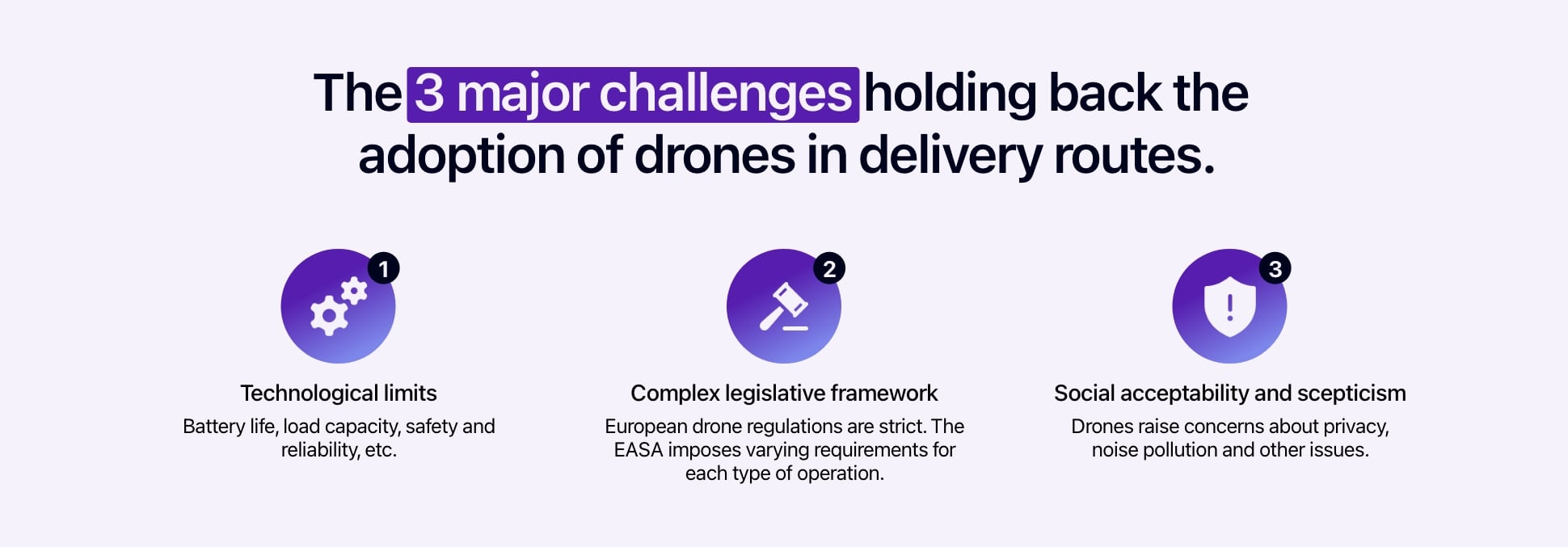
The 3 major challenges limiting the adoption of drones in delivery routes.
1. Technological limits to the use of drones in delivery routes
Although advanced, drones are still limited by a number of major technological challenges:
- Battery life: Today’s drones have limited battery life, generally between 20 and 40 minutes of flight time, which means they can only deliver parcels over short distances. The challenge of flight time and battery performance therefore remains central to making them more efficient.
- Load capacity: Today’s drones are often restricted to packages weighing relatively little (less than 5 kg), which limits their field of application, particularly for larger deliveries.
- Safety and reliability: Particularly in densely populated urban areas, ensuring the safety of drones and preventing the risk of accidents remain major challenges. This calls for advanced obstacle detection and avoidance technologies, as well as optimum management of climatic contingencies. Not to mention the risk of piracy.
Added to this are the investment costs of these technologies, which are still a major obstacle.
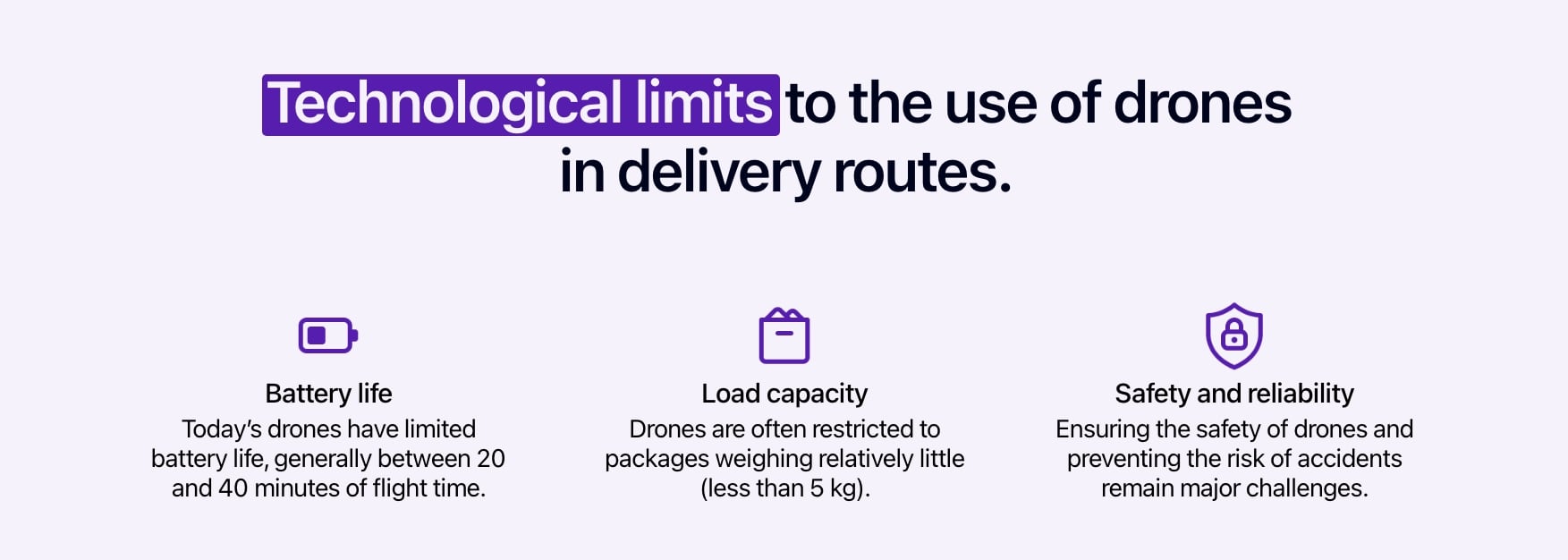
Technological limits to the use of drones in delivery routes.
2. Complex legislative framework, particularly in Europe
European rules on drones are relatively strict and sometimes unclear, which is holding back the rapid adoption of drones in delivery routes. EASA (European Aviation Safety Agency) regulations classify drones into three categories: open, specific and certified, and impose varying requirements for each type of operation. For example, BVLOS (Beyond Visual Line of Sight) flights are preferred for long-distance deliveries. But they require specific certification and authorisation.
- In the UK, drone regulation is governed by the Civil Aviation Authority (CAA). It prohibits the flying of drones within 150 metres of residential, commercial, industrial or recreational areas, unless special permission has been obtained.
- In Belgium, more extensive tests are being carried out in semi-urban areas, but restrictions remain, particularly in terms of safety and the integration of drones in the skies shared with commercial aircraft.
3. Social acceptability and scepticism regarding the introduction of drones
Drones raise concerns about their social impact and acceptability. Among the main concerns are issues of privacy (as drones are equipped with cameras) and noise pollution in urban environments. Local authorities and citizens are sometimes reluctant to accept a massive presence of drones in their airspace.
Adoption of drones slower than hoped: comparison with the United States
United States: an advanced testing field
Unlike Europe, the United States has adopted more permissive regulations. The FAA (Federal Aviation Administration) has authorised companies such as Amazon Prime Air, Wing and UPS to carry out drone deliveries, particularly in rural and suburban areas, in VLOS (Visual Line of Sight) mode. The United States benefits from a more flexible approach that allows drones to be tested over large areas without the same safety restrictions as in Europe.
Nevertheless, Amazon Prime Air announced in 2013 that it would deliver parcels within 30 minutes following the order. Ten years on, the reality is very different: although tests are taking place in several states such as California and Texas, deliveries remain limited to sparsely populated areas. Regulations, security and logistics obstacles are slowing down the scale of deployment.
However, in 2024, the FAA has granted Amazon permission to deliver parcels using its MK-27 drone in BVLOS, which will enable it to extend the range of its delivery zones. Amazon still plans to deliver 500 million small parcels a year using drones. And it plans to launch trials in Italy and the UK in 2025.
Its competitor Zipline has already made over a million drone deliveries for hospitals and major brands such as Walmart.
Europe: caution and division
In Europe, the approach is more cautious, with complex regulations and tests limited mainly to rural areas. This cautious approach is designed to ensure optimum safety, but it is also slowing down large-scale commercial deployment.
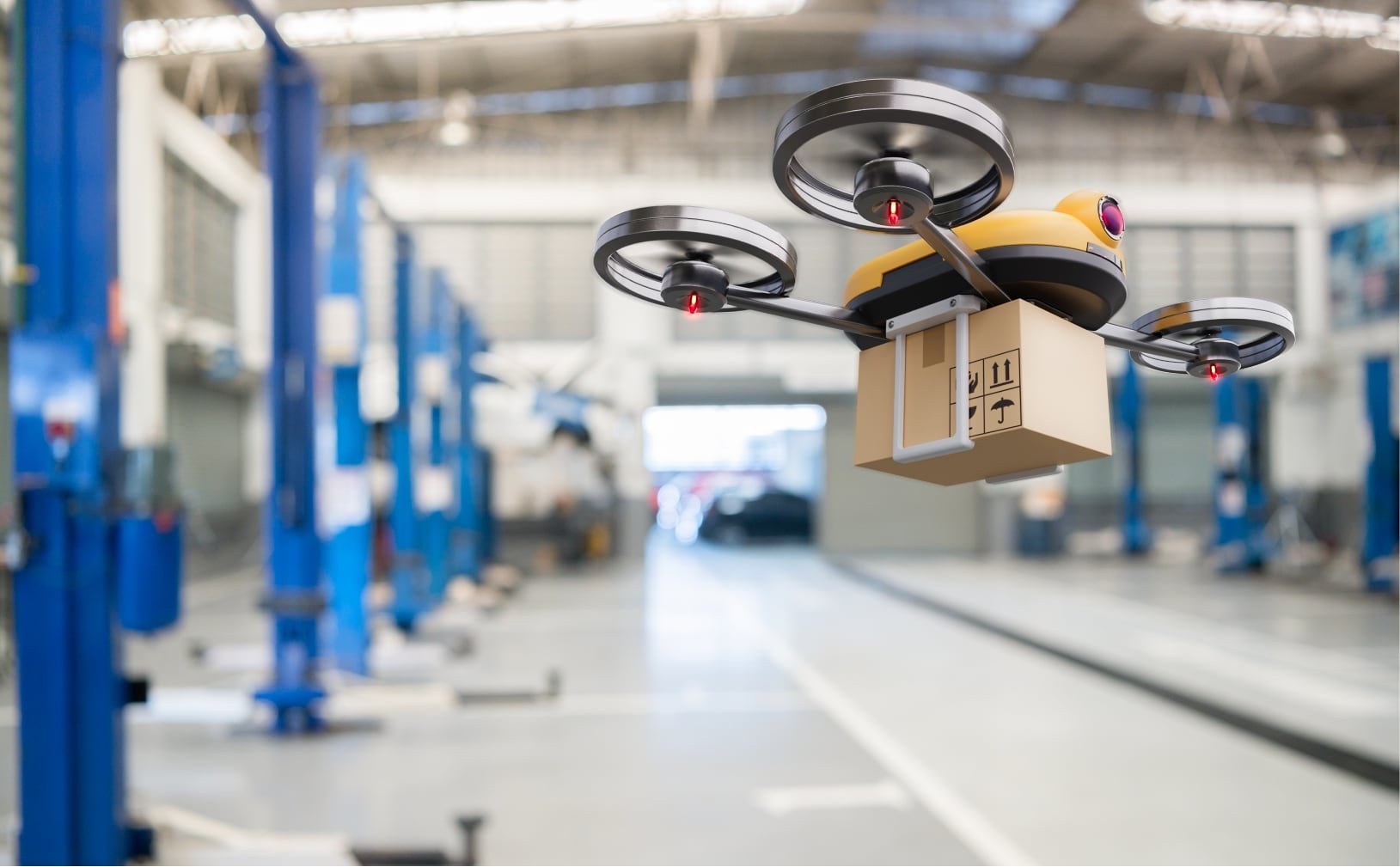
Adoption of drones is slower than hoped.
How can drones be successfully integrated into delivery routes?
Improving drone technologies
One of the major challenges remains improving drone technology, in particula :
- The development of more powerful batteries and better energy management to extend drone autonomy.
- Improved loading capacity, enabling the delivery of heavier parcels.
- The introduction of more effective obstacle detection and avoidance systems to guarantee safety in complex urban environments.
- Automation of drone delivery operations, to boost productivity.
Optimising routes with software solutions
Platforms such as AntsRoute help to optimise route management by integrating different means of transport with conventional vehicle itineraries. These solutions make it easier to plan combined deliveries that comply with both regulatory constraints and best logistics practice. The future integration of drone deliveries is also entirely feasible.
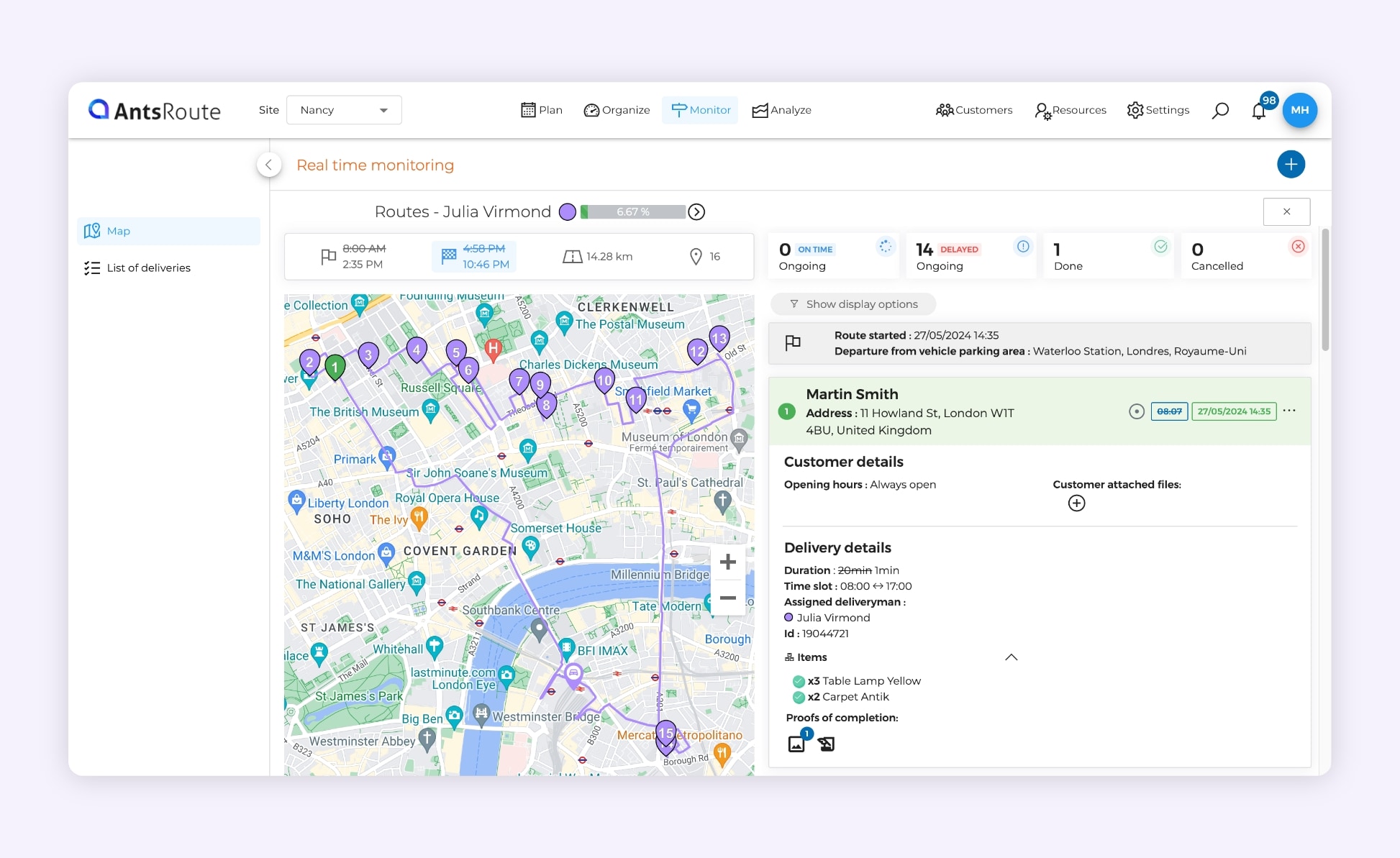
The AntsRoute route optimisation software.
Simplifying legislation and encouraging collaboration
To speed up the integration of drones into delivery chains, it is essential to simplify and harmonise the rules at European and national levels. Cross-border pilot projects should be encouraged to test the capabilities of drones in different regulatory contexts.
Despite their undeniable potential, the integration of drones into delivery routes remains hampered by technological challenges and strict regulations. The dreams of pioneers like Amazon in 2013 have yet to be realised on a large scale, but progress is being made, especially in rural areas. The future probably lies in a hybrid model, where drones and land vehicles will coexist to meet the logistics challenges of tomorrow.
WRITTEN BY
Maryline Lakh
Maryline worked for a major logistics company for 15 years. Since 2022, she has been an expert in communication and freelance writer for positive-impact logistics companies. She is passionate about new sustainable logistics solutions and writes for several clients, including AntsRoute.
Free 7-day trial | No credit card required
Contenu
- 4 major opportunities for drones to transform delivery routes
- 1. An ideal solution for last-mile deliveries to remote areas
- 2. Delivery by drone – an ecological response to the climate emergency
- 3. Drones provide invaluable speed for critical deliveries
- 4. Towards multimodal logistics between drones and land vehicles
- The 3 major challenges holding back the adoption of drones in delivery routes
- 1. Technological limits to the use of drones in delivery routes
- 2. Complex legislative framework, particularly in Europe
- 3. Social acceptability and scepticism regarding the introduction of drones
- Adoption of drones slower than hoped: comparison with the United States
- United States: an advanced testing field
- Europe: caution and division
- How can drones be successfully integrated into delivery routes?
- Improving drone technologies
- Optimising routes with software solutions
- Simplifying legislation and encouraging collaboration


